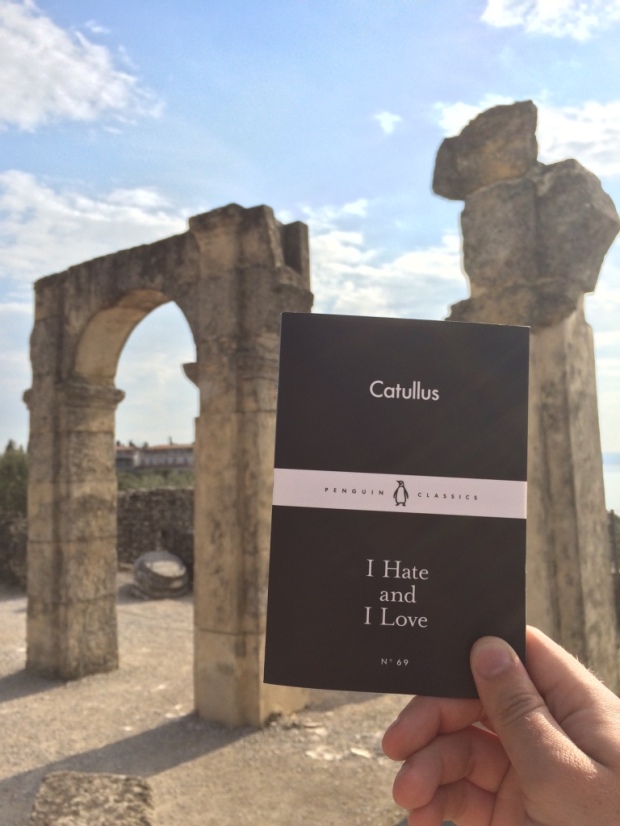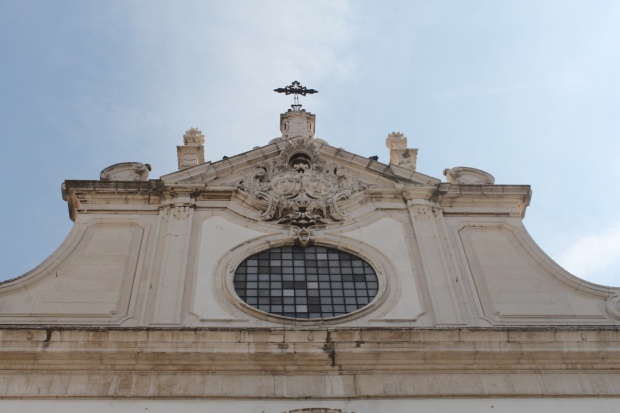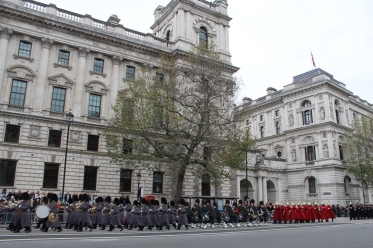I’m back! Remember me?!
I know, I know. It’s been four months. A third of a year. Tail well and truly between my legs.
In my defence, the last four months have been completely manic and utterly spectacular. I’ve been to India, and then to Edinburgh, threw a hen do for my sister, watched her get married, took up some freelance writing, saw one housemate move out and another move in, and did the usual 9–5 of course. Plus, summer arrived so I’ve been out and about in the capital, which has chiefly entailed enjoying a number of drinks in the sunshine, gazing lovingly at London. Rightly so, I’d argue.
I have finally sat down to blog and, with typical luck, my laptop is seriously playing up. I’ve resorted to typing this on my phone, but, having just spent 20 minutes on said phone to my electricity provider, my phone is low on battery. I’ve got it plugged into a socket and, as the chord isn’t particularly long, I’m leaning awkwardly across the sofa arm, causing a slightly stiff neck. That’s how committed I am to publishing this post.
My Mum always says this blog should be fun, and not a chore to squeeze in, so I haven’t forced myself. But I’m here at last.
Although I do have a confession…
This is not going to be the usual A Little Bit Bookish blog. There is so much to say, and I read this Little Black Classic back in May when I was India. I contemplated re-reading, but this post would have taken even longer to go live.
Rather than faffing further (I’m Queen of the Faff) I think I just need to WRITE SOMETHING. So that’s the plan. A little about the book and a lot about life.
Let’s do this…
Henry James travelled with me to Delhi in May this year, where I was lucky enough to spend a week working with my colleagues in our Indian office, before having a few days to explore. Prior to taking off from Heathrow, I had asked the Editorial Manager of the Travel team in Delhi (I work on Travel’s editorial team in London), Shikha, to choose a Classic for me, thinking I could then read and photograph the book during my trip.
India experienced a heatwave in May this year, and Rajasthan reached record-breaking temperatures. My lovely colleague Kathleen and I stepped onto Indian soil sometime around midnight, where we were enveloped by a 30°C+ heat. Imagine, 30°C at midnight! This was nothing – during our stay we reached a whopping 46°C (that’s 115°F to my transatlantic friends).
Take a moment to digest that.
During our working week in the Delhi office, we slithered between the hotel, the car and the office to make the most of the air con. And sightseeing required enough water to fill a bath.
Rather like Indian roads, the week was jam-packed and manic – between meetings, catch-ups and lunches, there wasn’t time for much else, other than an obligatory cup of tea, of course. It wasn’t all business, however. There were some sightseeing opportunities.
My fellow Editors took us to Dilli Haat (‘Dilli’ meaning Delhi and ‘Haat’ meaning market in Hindi), where talented craftsmen sell their beautiful wares. It was completely overwhelming. Conclusion of the shopping trip: I have much to learn when it comes to bargaining.
Here some of my colleagues enter into negotiation on my behalf…

With hindsight, this would have been the perfect place to take The Figure in the Carpet, which I was still reading at this point. Frantically rummaging through the dark corners of my memory, what I remember about the Little Black Classic is as follows…
The narrator of this short story, a newspaper journalist, is enamoured with a particular writer, Hugh Vereker, who he is fortunate enough to meet one day. Vereker hints that there is a subtext to his writing, referring to “my secret”. The narrator becomes strangely obsessed with uncovering the hidden, ambiguous message in the writer’s work. He tells his friend, Corvick, and Corvick’s partner, Gwendolen, about the riddle, but the three are unable to uncover the true meaning.
When travelling in India (yes, India!) Corvick believes he uncovers the meaning and telegrams his wife to tell her so. He promises to reveal the riddle’s answer to the narrator and Gwendolen when they are married, and not before. Alas Corvick passes away in a tragic accident and so his solution to the riddle is lost.
Gwendolen marries another, before she herself sadly passes away. The narrator asks her husband if she ever divulged the meaning, but he is none the wiser.
The narrator and Gwendolen’s widower continue to ponder over Vereker’s true meaning and the narrator never unearths the secret.
This was a strange one. I struggled to concentrate and really get under the skin of the Classic – this could well have been because I was distracted by work and India, although by and large I’m not a huge Henry James fan.
It was when reading that Corvick travelled alone to India, where he found the meaning, that I thought I had hit the jackpot. Dilli Haat had a number of stalls packed to the rafters with exquisite carpets, which would have proffered a perfect photo opportunity. I also loved the idea of a message being hidden in a Persian carpet, and could appreciate this – we saw so many beautiful carpets that could have been mapping out exotic realms with their intricate patterns.
Alas I was distracted by the constant commotion of India, and rather forgot about my Classic. It was like no other place I’ve been fortunate enough to visit. It made for a completely overwhelming trip.
Aside from Dilli Haat, our colleagues took us on a tour of Delhi, where we explored the Crafts Museum, saw India Gate and the Rajpath, the Presidential Palace, the outskirts of the Lodi Gardens and we visited the spectacular Qutb Minar. This minaret, the tallest in the world, was beautiful and a definite highlight, particularly as the sun set and the red sandstone bricks glowed amber.

We also visited the Lotus Temple, which we could see from our hotel in Nehru Place. The Bahá’í House of Worship comprises 27 petals that form nine sides, reflected in nine surrounding pools, housing one single hall of worship. Here, all faiths are welcome – there are no religious icons, structures or furnishings inside.


The following day we set off for Humayun’s Tomb, having heard from so many that it was a must-see. Sure enough, each step toward it was more thrilling than the last. It was so impressive, looming through the monumental gateways and pavilions that surround the mausoleum. At a whopping 46 degrees, however, I was struggling.

As a result of the heat, we weren’t able to make it to the Red Fort or the Jama Masjid, one of the largest mosques in India. Instead, Kathleen and I had a few cold beers and an early night, in preparation for our drive to Agra the following morning.
“An Indian driver needs three things,” Brij, our driver, said to us as we set off early the next day. “A good brake.” He put his foot down on the brake twice to demonstrate, lurching us forward in the process. “A good horn.” He stamped the heel of his hand onto the horn to emit a piercing toot. “And good luck.” He gestured to the figure of Ganesh, who sat on the dashboard.
We were soon speeding along the Yamuna Expressway in the direction of Agra – a positively smooth and relaxed journey in comparison to some of the roads we encountered in Delhi. Along with the road surfaces, the landscape changed; the buzzing, built-up city gradually transcended into tranquil green plains, with more and more bustle again creeping onto the roads as we approached Agra.
Upon arrival, we stopped at Agra Fort. As with all of the sights that we visited in Uttar Pradesh, pedlars congregated at the sight’s gates, showing their wares to sightseers, tour guides (some reputable, others not) loitered and children darted about; the historic walls acting as a backdrop to this bustling scene. This would form one of my most distinct memories of sightseeing in India.
Agra Fort was once the imperial residence of the Mughal Dynasty, and was certainly very imposing. In particular, I fell in love with the arches of the Diwan-i-Am, or the Hall of Audience, where the Mughal Emperor would have received visitors . They were beautiful, and offered a slightly shaded spot (much to my relief).

Having left the Fort, we had a couple of hours rest in preparation for the Mother of all sights – the Taj. We picked up several bottles of water, our cameras, a guide and a rickshaw en route; all that we would need to take in the Taj.
Words can’t do the Taj Mahal justice; anything I write is futile. All I will say is, it was magnetic – I couldn’t tear my eyes from it. We had dithered between visiting at sunrise or sunset, having received mixed advice from our colleagues. We settled upon sunset, as the light was meant to be particularly flattering. Sure enough, the Taj glimmered in the evening sun as we circled the monument to love.

Finally, early on the Monday morning, when it was cooler and the roads were relatively quiet, we drove to Fatehpur Sikri, which was my favourite sight of the entire trip. Set on a hill, we took a tuk tuk up to the imposing Buland Darwaza, the entrance to Fatehpur Sikri.

We had what was once the capital of the Mughal Empire (for just 14 years) pretty much to ourselves. The Imperial complex was wonderful to explore, with so many buildings to duck in and out of.

I returned to the UK, guilty that I hadn’t completed by bookish mission in India, but buzzing with my trip. I resolved to do something in London and so, on a particularly drizzly Saturday in June, I took a stroll to Kensington, where Henry James lived. I meandered around Kensington Gardens, watching passers by huddle under umbrellas and run for shelter, before going in search of Wells’ home.


It was the absolute antithesis of sightseeing in India. It was dark and pretty dismal, and I wasn’t approached or talked to.
I really appreciated the solitude of the walk – time alone with my thoughts, to reflect on our trip. And yet part of me did yearn for the chaos and colour of India.
Thank you to Shikha for choosing this Little Black Classic, for taking me under your wing while I was with you (and feeding me VERY well), and your patience with this post! I love this picture of us…

Also thank you to Kathleen for being the best travelling companion. What a trip! See you soon for that Tooting curry 😉

Next time (which hopefully won’t be in another four months) I will be reading John Keats’ The Eve of St Agnes.




































































































